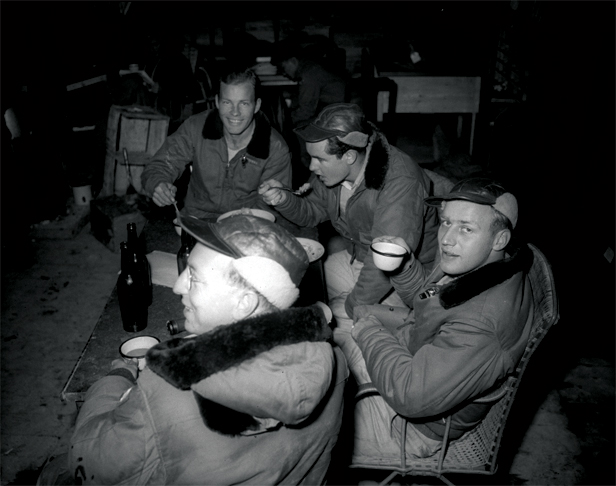A Can-Do Attitude

In September 1943, there was a flurry of activity in MIT’s biological-engineering research labs. In the midst of battle in North Africa, 20 German prisoners had been taken by American forces. They were first shipped to a holding facility in Cameron, Virginia, and then to researchers in Building 35 at MIT. Starting up spectrometers and microscopes for a thorough analysis, the scientists eagerly examined their captives: 20 samples of German military rations—ingredients, main courses, and desserts.
This was part of a wartime project at MIT that happened just down the street from the physics labs where scientists created battle-winning radar technology and the chemistry labs where researchers analyzed chemicals for the Manhattan Project. From July 1942 to October 1945, MIT scientists commissioned by the Office of the Quartermaster General in the U.S. War Department researched and designed rations for soldiers. Researchers in the burgeoning food technology program put their academic work on the back burner, throwing themselves fully into finding the best ways to feed troops overseas.
The researchers first turned to designing a more condensed soda cracker, a concentrated food product for mountain troops, and an all-purpose emergency food capable of sustaining an isolated individual for an indefinite period of time. In addition to creating the foods, they devised new ways of protecting them from combat conditions. They investigated how to insect-proof containers, dry whole eggs for high-temperature storage, and stabilize milk powder.
But this ultra-practical research made up only a small portion of their work. While they strove to maximize calories per gram of highly stable nourishment—the only real, tangible measure of their success—the researchers also put a great deal of creativity and ingenuity into creating foods more palatable than mere ration crackers. During the war, they focused on developing entire meals that could be cooked, packaged, and frozen. This broadened the variety of foods the scientists could send off to ships and base camps equipped with freezers, and it meant they could address more than just the physical needs of soldiers abroad. Now the diet of the American fighting overseas could resemble what his wife or mother might have served him: beef steak, beef stew, pot roast, roast beef hash, creamed chicken, apple brown betty. Large swaths of MIT’s military food research records read like cookbooks from the 1940s, complete with instructions for browning the meat and stewing the vegetables until tender. This easy familiarity is disrupted only in the final step of each recipe, which calls for processing the finished meal in an industrial-strength freezer.
In their effort to give soldiers something that reminded them of home, the researchers also developed a range of canned comfort foods, including meat loaf, bread, and scrapple (a mixture of sausage and cornmeal). Perhaps their most ambitious project of all was to tackle making a canned apple pie that would give the real thing a run for its money. Soggy crust was not an option, regardless of the harsh conditions required to preserve the treat. The researchers attempted two crust arrangements within the can—one version with crust only on the top and bottom, and then another in which it also lined the sides. They experimented with different lengths of time between baking the pie in the can and processing it further, to see if letting the crust set before preserving would help maintain the flakiness.
The results were inconclusive. But the researchers ended their report by optimistically asserting that a high-quality canned apple pie seemed possible, given a new, as-yet-undeveloped recipe.
Underneath the researchers’ highly technical language—the discussions of albumin pH and vitamin B fortification—is an unmistakable soft touch. They spent months and sometimes years tinkering and experimenting and reëvaluating in order to give a young man—cold, scared, and far from home—not just what his body needed but what his homesick spirit craved. Soda crackers and subsistence rations were one thing. But crisp, flaky-crusted apple pie? Now that was a wartime assignment worthy of pursuit.
Keep Reading
Most Popular
Large language models can do jaw-dropping things. But nobody knows exactly why.
And that's a problem. Figuring it out is one of the biggest scientific puzzles of our time and a crucial step towards controlling more powerful future models.
How scientists traced a mysterious covid case back to six toilets
When wastewater surveillance turns into a hunt for a single infected individual, the ethics get tricky.
The problem with plug-in hybrids? Their drivers.
Plug-in hybrids are often sold as a transition to EVs, but new data from Europe shows we’re still underestimating the emissions they produce.
Stay connected
Get the latest updates from
MIT Technology Review
Discover special offers, top stories, upcoming events, and more.